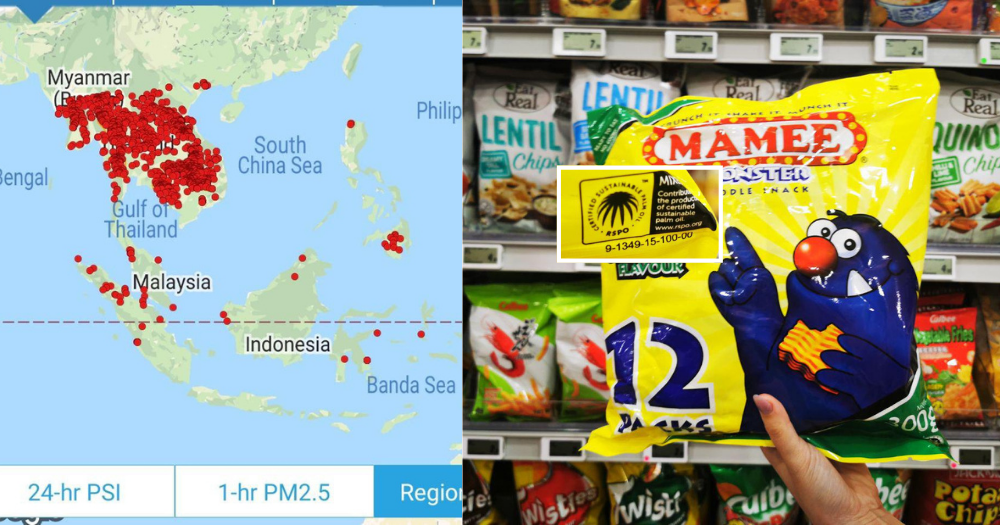Take a deep breath right now.
*DEEP BREATH*
You might not smell anything amiss with the air in Singapore right now but fire activities in our neighbouring countries are on a rise.
Some of us have also picked up a burning smell in the air recently even though it’s not the typical haze season.
Here’s a map showing all the hotspots in our neighbouring countries on Mar. 1 afternoon.
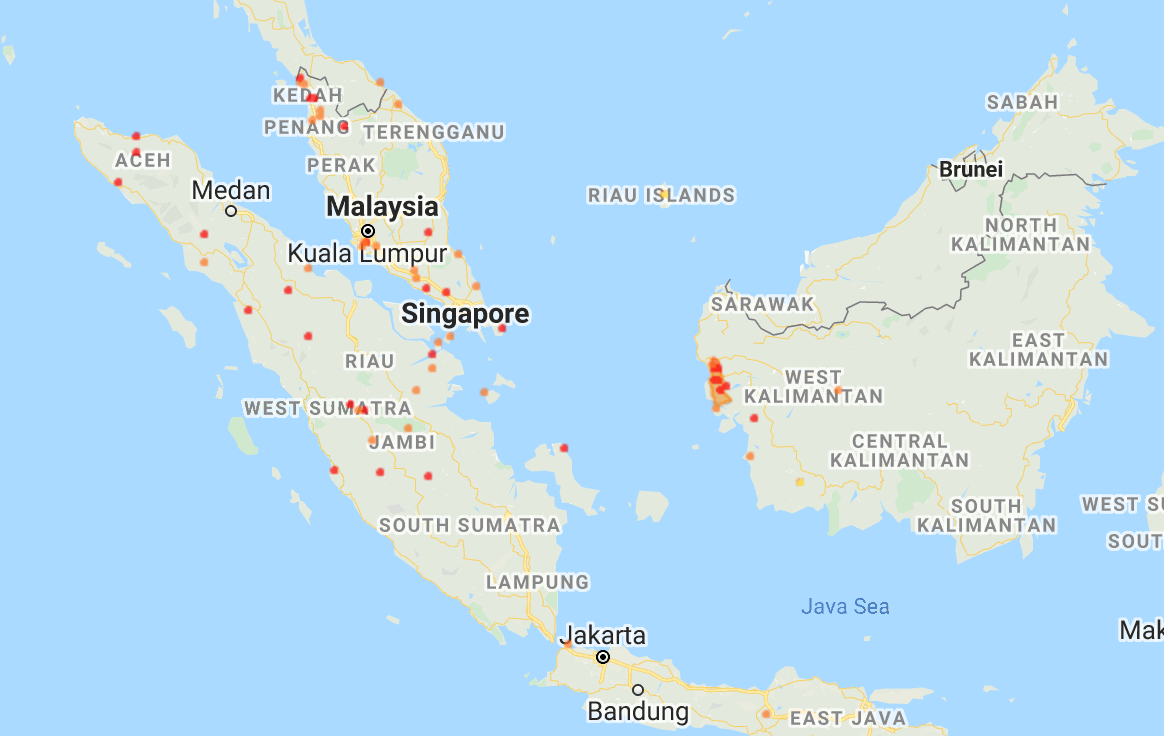
The reason why there isn’t an acrid burning smell in the air stinging our eyes and causing great discomfort all the time is this because of the wind.
Depending on where the hotspots are, the wind might not be blowing the smoke haze towards us.
This means that we can experience a return of the haze anytime if, by any chance, the wind changes direction.
But do we really want to leave it to chance, especially in times of Covid-19?
What causes haze?
To solve the root of the problem, we have to look at the source of haze which is produced by the burning of forests and peatlands to make space for the plantations in countries like Malaysia and Indonesia.
Many of these plantations are oil palm plantations.
These oil palm plantations supply edible vegetable oil for companies to produce many essential goods that we use or consume daily.
In Southeast Asia, a significant number of livelihoods also depend on palm oil, from individual farmers to plantation workers. Over 85 per cent of the world's demand for palm oil is produced right here in Malaysia and Indonesia.
Palm oil itself is not a problem. Palm oil is one of the most land-efficient oil crops, producing more per hectare than the alternatives.
But using unsustainable production methods can tip the balance from positive to negative.
Many farmers depend on the slash and burn method (slashing trees and burning them) in order to clear extensive land to grow oil palm trees.
This method is favoured because it is quick and cheap. However, the deforestation on a massive scale also results in large fires which in turn wreck homes of wildlife such as the Orangutans.
Peatlands are waterlogged rainforests which trap a lot of carbon. When they are drained and converted for industrial agriculture or small-scale subsistence agriculture to produce commodities like palm oil, they release a large amount of carbon dioxide which contributes to global warming.
So, in order to turn things around, it is important for both businesses and consumers to support sustainable palm oil production.
And chances are the change is happening, slowly but surely. Around 19 per cent of global palm oil is certified sustainable by the Roundtable on Sustainable Palm Oil (RSPO) and more can be encouraged to switch to sustainable production techniques with greater support.
Choose sustainable palm oil
PM Haze, a Singapore non-profit organisation, has been working on this front since 2014, a year after the epic transboundary haze crisis.
Since then, many companies have chosen to use sustainable palm oil in their products.This includes well-known food brands like Mamee, Oreo and Lotus biscuits, M&M and Ferrero Rocher chocolates, Nutella, Knife cooking oil and more.
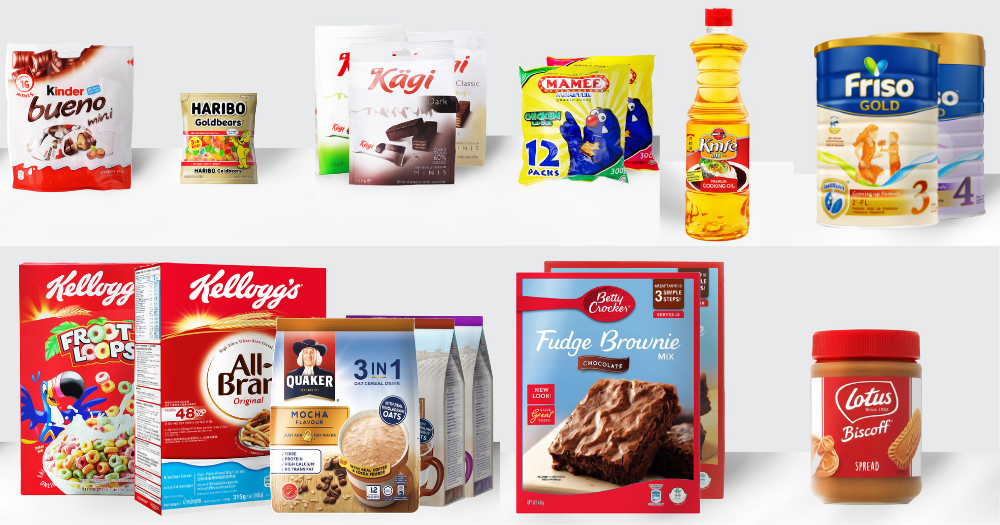
Sustainable palm oil is produced without burning or deforestation, degradation of peatlands, and social exploitation. That means small farms who grow oil palm sustainably will benefit from your mindful purchase too.
For example, a farmer named Rusman who grows oil palm sustainably under RSPO has found ways to increase his yields and to provide a better life for his family without causing any destruction to nature.
You can learn about his story here:
40 per cent of Indonesian palm oil is actually produced by small farmers like Rusman. Just imagine if all of them were to adopt sustainable practices, it will be beneficial for the environment without them losing their source of income.
Some products made from sustainable palm oil can be easily identified with this RSPO label:

Something you can take note of when you make your purchases from now on. ;)
PM Haze’s work does not stop there though.
Encouraging more local eateries to choose sustainable palm oil
The non-profit is also reaching out to local eateries to encourage them to choose sustainable palm oil products.
Here are the eateries in Singapore which use certified sustainable cooking oil now:
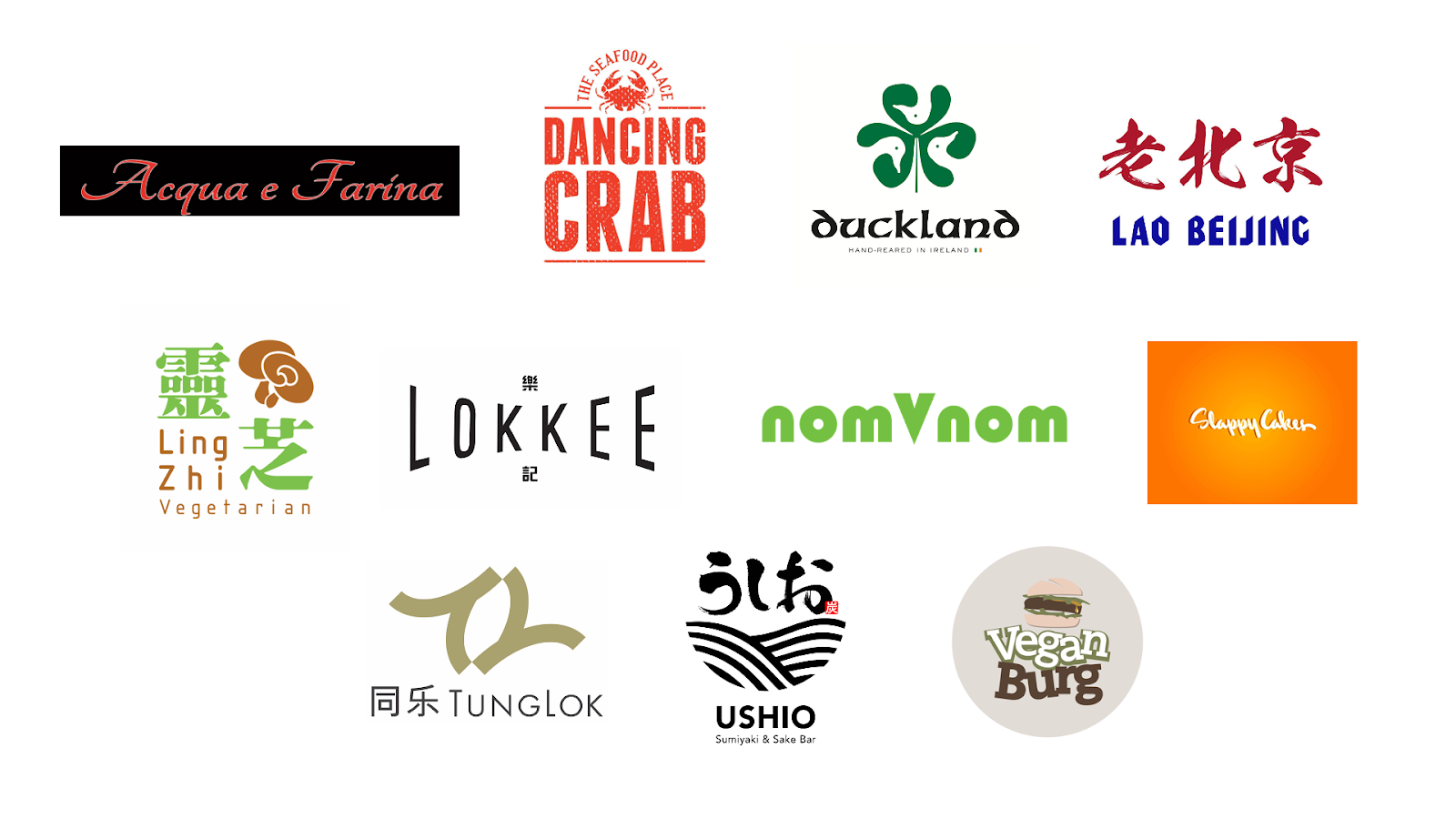
Hailed as a food paradise, surely more eateries in Singapore can consider this switch?
Haze-Free Foodstand
As part of its latest effort to urge eateries to choose sustainable palm oil, PM Haze has launched a new campaign called “Haze-Free Foodstand”.
Eateries can qualify to be branded as a “Haze-Free Foodstand” as long as they have one product that uses RSPO (Roundtable on Sustainable Palm Oil)-certified palm oil and commit to continue sourcing for RSPO certified products.
Just one, pretty doable right?
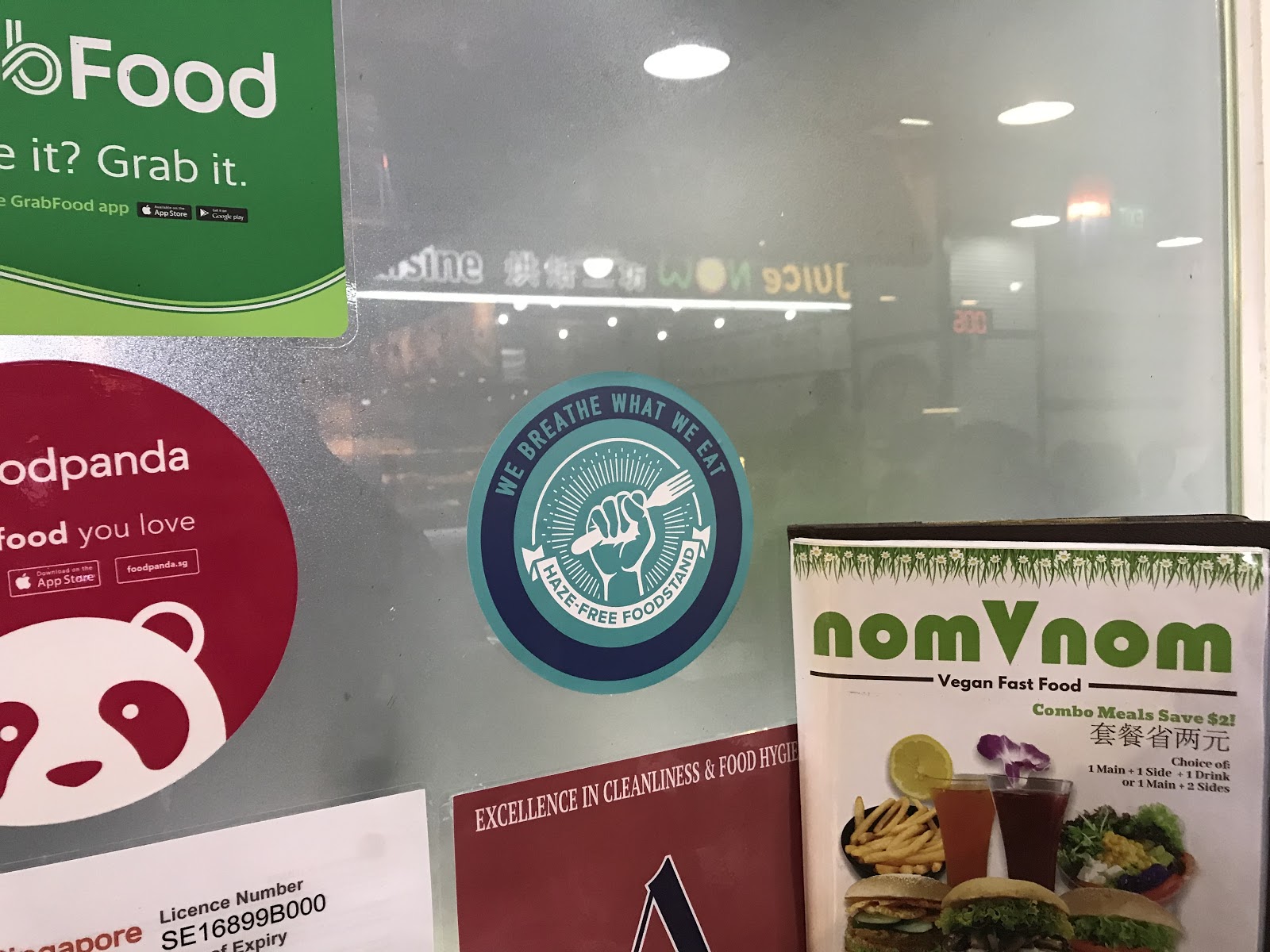 Photo of nomVnom, a vegan burger shop that is a Haze Free Foodstand. nomVnom sells over 20 different types of vegan burgers, who says a green diet has to be a boring one?
Photo of nomVnom, a vegan burger shop that is a Haze Free Foodstand. nomVnom sells over 20 different types of vegan burgers, who says a green diet has to be a boring one?
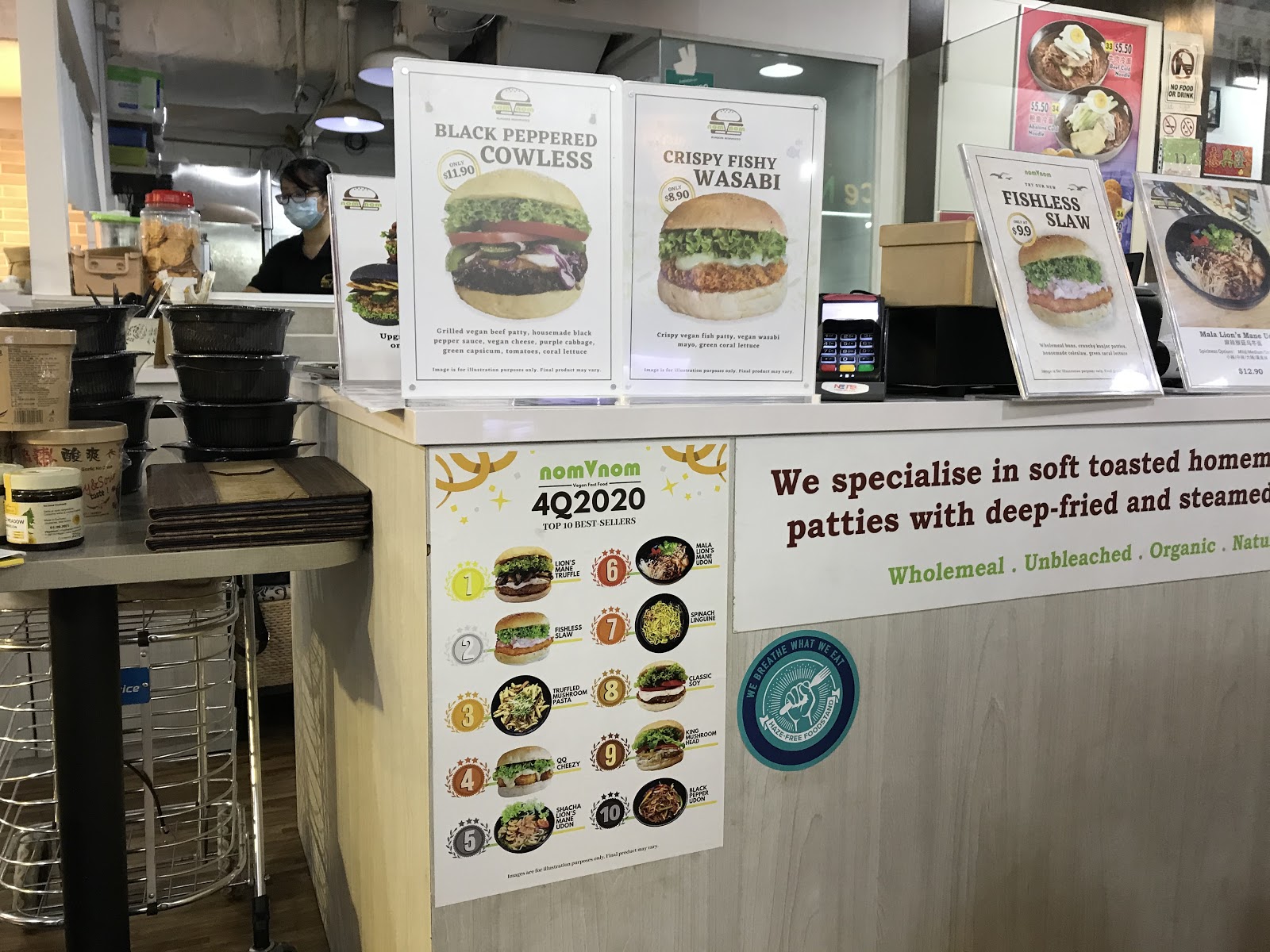 A close up shot of the Haze Free Foodstand decal.
A close up shot of the Haze Free Foodstand decal.
PM Haze will help to promote these eateries on their social media platforms as well as give them a unique decal to help consumers recognise these eateries’ efforts in promoting sustainable palm oil production, and hopefully, having the far-reaching effect of reducing haze in Singapore.
And for the rest of us?
You can be a conscious consumer to support these eateries or spread the word about PM Haze’s campaign.
Top image: Screenshot from NEA website and photo by Zheng Zhangxin. The writer of this sponsored content by PM Haze hates to imagine how awful it is to live with both haze and Covid-19.
If you like what you read, follow us on Facebook, Instagram, Twitter and Telegram to get the latest updates.
